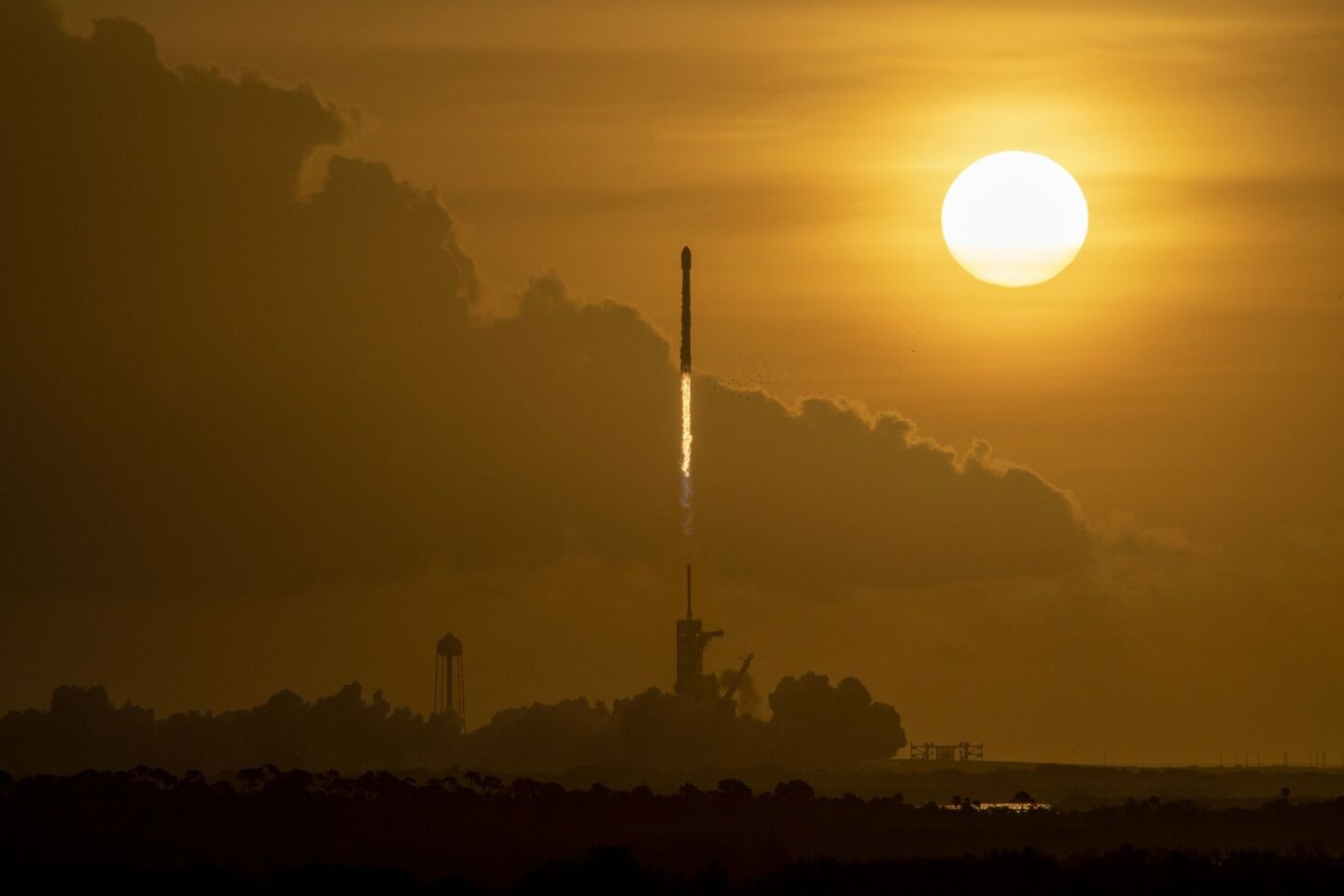A Falcon 9 (finally) took off on Tuesday, October 6 to deliver a new batch of Starlink satellites to low orbit, after two launch delays. SpaceX has again recovered the first stage of its launcher, but also the two halves of its fairing.
Sixty new satellites have just joined SpaceX's Starlink mega-constellation. As a reminder, it is a question of deploying at least 12,000 over the next few years with the aim of offering very high speed internet access to the entire planet. This new launch, carried out from NASA's Kennedy Space Center (Florida), brings the total number of these instruments in orbit to 773 .
As a reminder, Elon Musk said it takes between 500 and 800 satellites in orbit before the service can start rolling out. We also know that SpaceX employees are already using Starlink terminals (roughly the size of a laptop), collecting latency statistics and performing standard system speed tests.
According to Kate Tice, engineer at SpaceX, the first results are good. These tests indeed reveal “extremely low latency” and “download speeds greater than 100 megabits per second” . Enough to provide “enough bandwidth to play the fastest online games and stream multiple HD movies at the same time” , she recently said. It is finally expected that a public beta will be available before the end of the year.
Regarding this launch, it was also the company's 16th global mission for its fiscal year 2020 . Only China is doing better, with around thirty launches carried out so far this year (including four failures).

Also note that the first stage of the Falcon 9, designated B1058, returned to land successfully at sea approximately 8:30 minutes after takeoff on a platform stationed in the Atlantic Ocean. He had already flown twice. A first time as part of the Demo-2 mission to send NASA astronauts to the ISS last May. It also allowed the launch a few weeks ago of a communication satellite for the South Korean army.
Finally, SpaceX also again managed to recover the two halves of its fairing (the nose of the rocket, inside which the satellites are placed). Each element, which costs approximately six million dollars , is equipped with software to direct it to its dedicated recovery area, and a parachute system for smooth landing.
Note that one of the two fairing pieces for this mission had already flown twice, protecting two different Starlink payloads (in May 2019 and March 2020).
Also note that this new launch came after several cancellations in recent days. That of the Falcon 9 carrying a GPS 3 satellite was indeed canceled barely two seconds before takeoff on the evening of October 2. Musk later tweeted that the countdown had stopped due to an “unexpected pressure increase in the turbomachine gas generator” .
A day and a half earlier, the launch of the Falcon 9 carrying this new set of Starlink satellites had been stopped 18 seconds before takeoff due to an error reading from a ground sensor. This same launch was canceled a second time on Monday, October 5, two seconds before liftoff.
Understandably, these back-to-back issues have somewhat annoyed Elon Musk, who has pledged to undertake a "broad review" of operations to increase the rate of launches. He will also be visiting the company's two sites in Florida this week:one at Cape Canaveral Air Force Station and the other at Kennedy Space Center.
Musk would indeed like SpaceX to achieve at least 22 launches in 2020, and 48 in 2021. Technical cancellations, such as those recorded last week, will not be able to allow this. This is why Musk will work over the next few days with his teams, so as to streamline these launch operations.
As a reminder, Elon Musk is both the general manager of SpaceX but also its chief engineer. It is therefore he who leads the discussions during the high technical meetings. It also remains the main driving force behind the technical excellence of the company. So, by coming to Florida, Musk won't just be reminding his teams of his launch expectations; it will also provide its technical expertise in order to achieve its objectives.